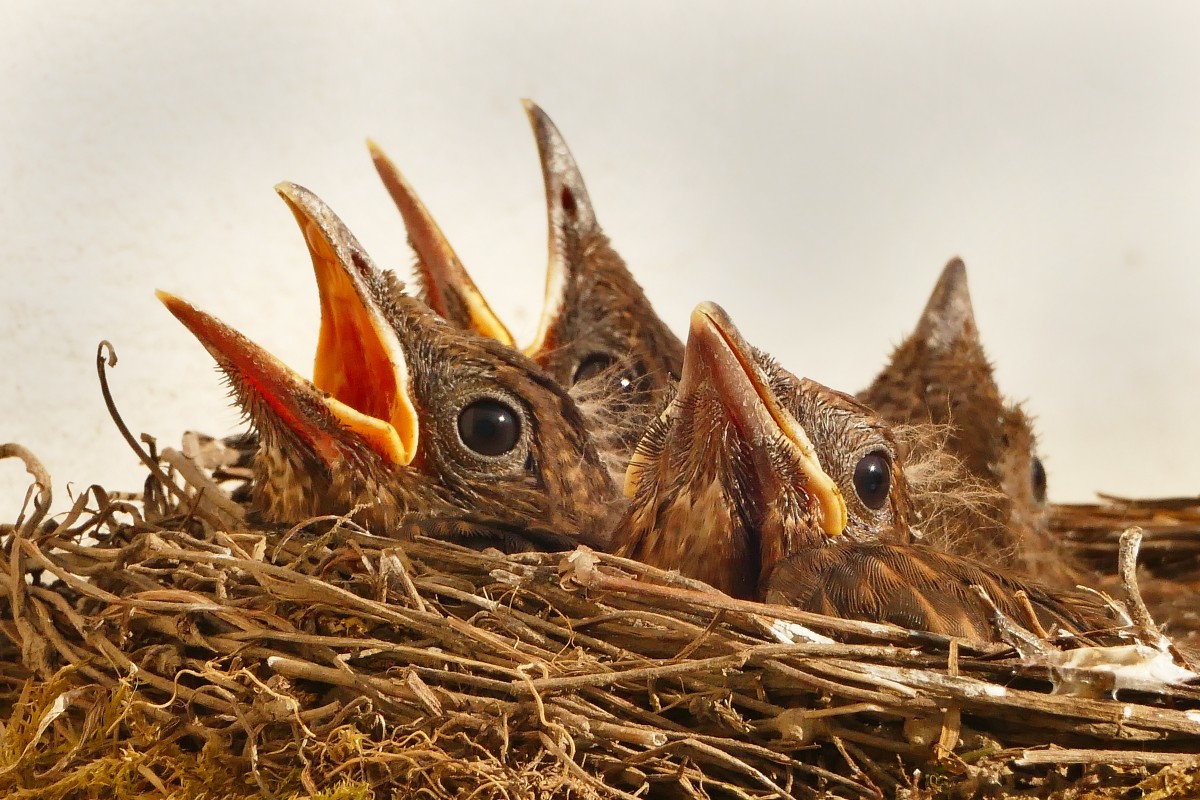(David Craig is a local innovator whom I met at an event a couple weeks ago, and he wowed me when we chatted about his newest project. I know I can’t stop singing the praises of DFC’s neighbourhood, but the news David related to me means my community is about to get even more exciting!)
Builder David Craig’s Talking Trees Earthship build is unfolding as part of North Frontenac’s “One Small Town” project — The first Canadian iteration of a utopian community planning initiative.
While the town will — according to plans — feature a wellness centre, a wood shop specializing in canoes, and an apiary, The Talking Trees project will take care of the homes: each one built to the Earthship design.
The Earthship concept was invented in the 1970s by Michael Reynolds, an American architect who sought to create a home concept that would use indigenous or recycled materials, rely on passive solar energy or other naturally occurring energy sources, and adhere to principles of sustainable architecture.
Craig has modified the overall shape of the Earthship design, but retained key functional components, like a south-facing bank of windows to grow greenhouse plants for food and processing greywater, and a back wall made of rammed earth and recycled car tires, that acts as “thermal mass” to regulate internal temperature, no matter the conditions outside. Proponents tout Earthships as being so self-sufficient they are nearly “off the grid.” Which could be great for some homeowners!
“[Craig] said the owner of the home plays a big part in the design in terms of how many solar panels are used, size of the greenhouse and accoutrements as well as actual construction if desired but $150 per square foot is ‘middle ground’ building cost for these homes.
The actual plan for One Small Town is very much still in the planning stages but for Craig location, and/or construction of the other components (medical centre, electrical generating plant, aquaculture facility, apiary and wood products) is a non-issue. He’s ready to start building houses as soon as the land is secured and subdivided.”
I love how, with this project, local people are coming together to realize an innovative, almost pie-in-the-sky dream, and using technology to bring our community back into sync with the land. We’ll see how funding and permit-acquiring go, and check back in with Talking Trees by the time they break ground in 2018!

Last month, American biohacker Tristan Roberts participated in a unique collaboration with Ascendance Biomedical on a new treatment for HIV. The collaboration was unprecedented not just in its approach, but its execution: Roberts voluntarily injected himself with Ascendance-provided components of a new gene therapy, over livestream. Roberts and the corporation hoped to find an ethical way to circumvent an extended testing and approval process that they both see as a roadblock to fast and cheap HIV and AIDS interventions.
This action has opened up a debate about the necessity of that approval process, and the future use of the blockchain for medical purposes. And, Roberts’ one-month results (which in true biohacker spirit he has transparently shared with the public) have just come in — which add a whole new dimension.
Roberts’ therapy involves plasmids, which are circular pieces of DNA that can self-replicate. In 2016, National Institute of Health scientists (unaffiliated with the Ascendance experiment) isolated from an HIV positive patient and antibody called N6, which proceeded to knock out a startling 98% of known HIV strains. The ultimate aim of the discoverers is to replicate enough N6 to transfer it into HIV positive patients, which will modify their own cells to start producing it, and will functionally cure them of HIV. (That is, to drop their viral load into undetectability) But this process is slow and expensive.
So Ascendance Biomedical and volunteer Roberts united to test both the therapy, and a new way to access it — through the blockchain. Says Ascendance Biomedical CEO Aaron Traywick:
“‘We’re basically working with a model that’s a replication of the FDA’s Compassionate Access Program. […]’
‘We make all our technology and all our treatments available to anyone who buys our Ethereum coins,’ Traywick explained. The purchase of a coin enters the buyer into a contract relationship with the company. Traywick says this means Ascendance ‘will provide to you at the cost of production and materials, the treatment for research purposes only and not for human consumption.’”
And this is the problem, according to medical ethicists. The standard approval and testing procedure, which Roberts, Ascendance Biomedical, and others who think like them see as an impediment, is a time-tested way of “lower[ing] the chances that people will be directly harmed by their ‘treatments,’ will end up wasting their time and energy on useful ‘cures,’ or [avoiding] helpful treatments while chasing a pie in the sky panacea.”
But Roberts, in particular, is hoping his results will someday speak for themselves. So far, they haven’t quite: at the one-month mark (Nov. 15), Roberts’ viral load has increased. However, his count of CD4 cells (healthy immune cells whose destruction is a clear marker of unchecked HIV infection) has also risen. Roberts himself thinks it’s still to early to tell whether his results mean the therapy is working, but pledges to keep getting tested, and if his viral load continues edging upward, to attempt another dose of N6 by the end of the year. It seems that in both the medical and ethical aspects of this case, only time will show how things will shake out.

I’m grateful that DFC’s office is one where it’s easy to strike a work-life balance. I manage to indulge in one of my favourite hobbies — birdwatching — simply by looking out the office window!
It was after returning from one of these coffee break birding sessions that I came across some startling news from New Scientist. Researchers are concerned that singing behaviour by the females of some northern bird species (which is unusual — females are typically silent) is a change caused by global warming. Here I was, thinking that I had been observing something charming, rather than the fallout of a sinister planetary trend.
Scientists out of Ohio Wesleyan University looked to North America’s dark-eyed juncos (which are officially migratory, but spend a lot of time in our neighbourhood in Southern Ontario) and set up an experiment within a wild population in San Diego, CA. They placed a caged female into their established territory to see if the  females could be prodded into their atypical singing behaviour.
females could be prodded into their atypical singing behaviour.
“In all, 17 females, along with 25 males, interacted with the caged females. Half the females dived and lunged at them, and a minority also performed aggressive tail-spreads not normally seen in females. Three of the females sang songs similar to those of males.
“The context in which the songs were observed – responding to a female intruder – suggests these songs have an aggressive, territorial function,” says [Dustin] Reichard [of Wesleyan’s Department of Zoology]. “But we can’t say whether female song is specific to female intruders without also measuring their response to male intruders.”
In addition to racking up “some of the first evidence that female song can be rapidly regained in a songbird species,” the scientists are extrapolating this territorial behaviour as a response to climate change. The junco community in the study stopped migrating 35 years ago, resulting in this defensive behaviour in females. As North America warms, the need to migrate to avoid inhospitable weather will further reduce, leading to bigger pockets of permanent junco populations. And females there will also be pressured to sing in order to hold onto their mates and their territory.
All this is very stressful to contemplate as I gaze out at the fall landscape around our office. I hope out biosphere is able to roll with the punches of climate change. Only time will tell – but I have a new thing to think about as I (attempt to!) decompress at the office.

As a dog owner, I know firsthand how wonderful it is to have a furry friend (or two) in your life. Dogs and cats have been living with and alongside humans for centuries — but sometimes, due to living space constraints or mobility issues, keeping a live pet is not an option. And, in finding tech workarounds, sometimes you end up with something really… weird.
Take Qoobo, a fuzzy “therapy robot” created by Yukai Engineering in Japan, and set to hit the market in 2018. Billed as “a tailed cushion that heals your heart,” it’s basically a tubby disc with a cat-like tail appendage that swipes back and forth when sensors detect a human petting it. Or, as Jezebel puts it, “an animatronic coonskin cap.”. Check out a video of it in action here.
Compared to other therapy robot animals on the market, like Hasbro’s Joy for All companion pets (a line of three, startlingly accurate cat robots), Qoobo is very minimalist. And for anyone who has a living animal in their life, it the whole thing is a bit strange and soulless.
However, for people without the space to keep or the resources to feed and clean up after a living animal, a robo-kitty could be a mental health godsend. The benefits of animal company to humans are well documented. There are many programs that bring living pups into senior care centres, among other places. And, when a person living with dementia needs a soothing animal friend at 3 a.m., having a robot in the facility is more convenient — and helps just as well — as the real thing.
While there is a time and place for robot pets, I’ll have to leave them for the time being to folks better suited to the lifestyle. I definitely have my hands full with my living fur balls!